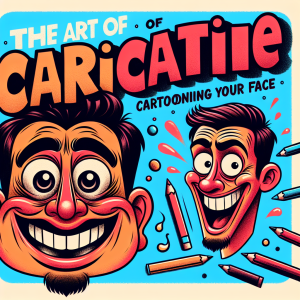When it comes to iconic characters in the world of comics and cartoons, there’s one group of characters that has always held a special place in the hearts of fans: dogs. From classic comic strips to beloved animated TV shows, cartoon dogs have left an indelible mark on popular culture, and their expressive and lovable faces have become synonymous with joy, laughter, and endless adventures. Join me as we take a closer look at the legacy of cartoon dog faces and the impact they’ve had on our culture.
The Early Days: From Comics to Cartoons
Cartoon dogs have been a staple of popular culture for as long as we can remember. From the mischievous antics of Snoopy in “Peanuts” to the brave and adventurous spirit of Pluto in Disney’s classic animated shorts, these lovable characters have captured the imaginations of children and adults alike for generations. In the early days of comics and cartoons, artists and animators were able to bring these characters to life by giving them expressive faces that could convey a wide range of emotions, from joy and excitement to sadness and fear.
One of the most iconic examples of this is the famous “dog face” found in classic comics and cartoons. These exaggerated and expressive faces were often used to convey the emotions of the characters, and they quickly became a defining characteristic of the beloved cartoon dogs we know and love.
The Evolution of Cartoon Dog Faces
As comics and cartoons evolved over the years, so too did the faces of cartoon dogs. Artists and animators began to experiment with different styles and techniques, creating characters with even more expressive and dynamic faces. From the wide-eyed innocence of Lady and the Tramp to the over-the-top drama of Scooby-Doo, these new and improved dog faces captivated audiences and helped to further solidify the legacy of cartoon dogs in popular culture.
One of the most notable examples of this evolution is the shift from traditional hand-drawn animation to computer-generated imagery (CGI). With the advent of CGI, animators were able to create incredibly detailed and lifelike dog faces, allowing for even more nuanced and expressive characters. This revolutionized the way we see cartoon dogs and paved the way for a new era of animated storytelling.
The Influence of Cartoon Dog Faces
From comics to cartoons, the legacy of cartoon dog faces has had a profound impact on popular culture. These lovable characters have become enduring symbols of friendship, loyalty, and adventure, and their expressive faces have helped to convey the emotions and experiences of their stories in a way that resonates with audiences of all ages.
One of the most significant ways that cartoon dog faces have influenced popular culture is through their representation of empathy and compassion. The expressive faces of cartoon dogs have helped to teach children and adults alike about the importance of understanding and empathy, and they have served as powerful symbols of emotional intelligence and resilience.
Additionally, these lovable characters have also had a positive impact on the way we view and interact with animals in our everyday lives. Through their expressive and relatable faces, cartoon dogs have helped to promote a greater appreciation and understanding of the unique personalities and emotions of our furry friends, fostering a deeper connection between humans and animals.
The Future of Cartoon Dog Faces
As we look to the future, it’s clear that cartoon dog faces will continue to play a significant role in popular culture. With advancements in animation technology and the continued popularity of animated storytelling, we can expect to see even more expressive and dynamic cartoon dog faces that capture the hearts and imaginations of audiences around the world.
Whether it’s through the latest animated TV shows, blockbuster movies, or interactive video games, the legacy of cartoon dog faces will endure, inspiring new generations of fans and continuing to enrich our lives with joy, laughter, and a whole lot of heart. So, the next time you see a cartoon dog with that iconic, expressive face, take a moment to appreciate the legacy of these beloved characters and the impact they’ve had on our culture.
FAQs
What are some popular examples of cartoon dogs with iconic faces?
Some popular examples of cartoon dogs with iconic faces include Scooby-Doo, Snoopy, Goofy, Pluto, and Odie.
How have cartoon dog faces influenced popular culture?
Cartoon dog faces have had a profound impact on popular culture by serving as symbols of empathy, compassion, and emotional intelligence. They have also helped to promote a greater appreciation and understanding of animals in our everyday lives.
What can we expect to see in the future of cartoon dog faces?
With advancements in animation technology, we can expect to see even more expressive and dynamic cartoon dog faces that capture the hearts and imaginations of audiences around the world, inspiring new generations of fans and continuing to enrich our lives with joy, laughter, and heart.
From comics to cartoons, the legacy of cartoon dog faces is one that continues to captivate and inspire audiences of all ages. Whether it’s through their expressive and emotive faces or their enduring messages of friendship and loyalty, cartoon dogs have made an indelible mark on popular culture, and their legacy is sure to endure for generations to come.








+ There are no comments
Add yours